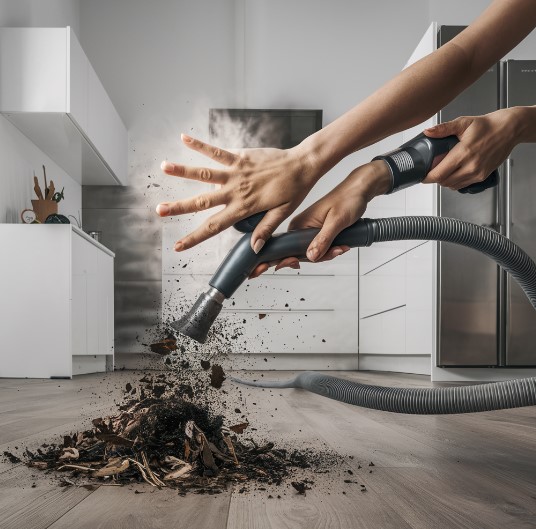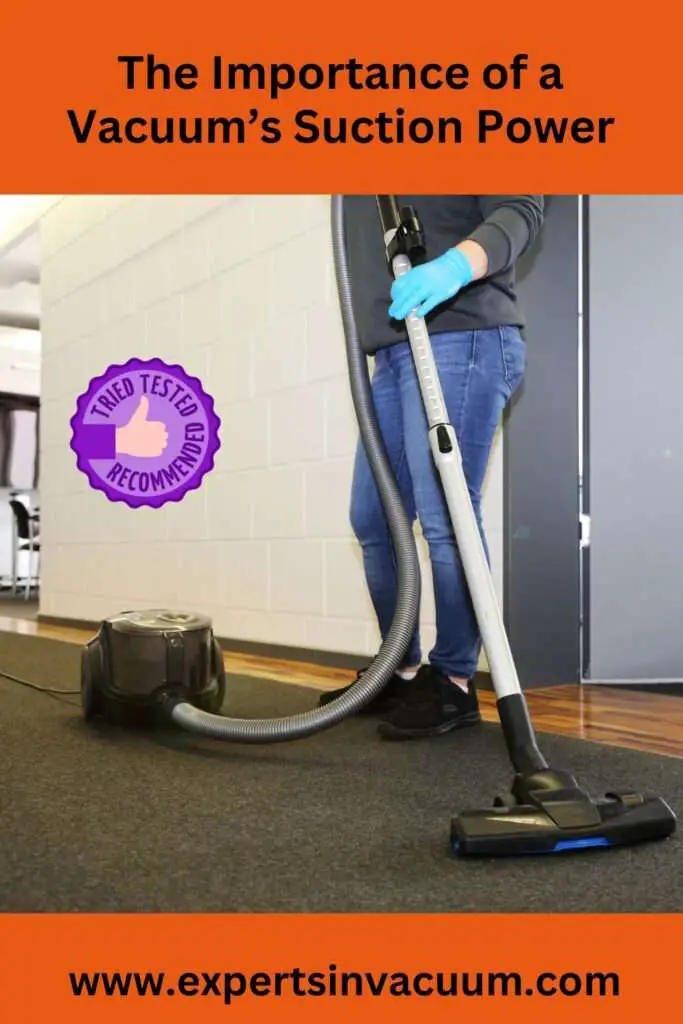
Welcome to our latest blog post on “Reducing Vacuum Suction: Effective Methods.” Vacuum suction is a common nuisance, whether it’s causing discomfort during a facial or making cleaning a hassle. But fear not!
In this article, we’ll explore practical and proven techniques to minimize vacuum suction, ensuring smoother experiences and easier tasks for everyone. Let’s dive in and discover solutions that work for diverse needs and situations.
In this post we will cover:
- The Importance of a Vacuum’s Suction Power
- Measuring Suction Power
- How Much Suction Power is Enough?
- How Do You Reduce Suction Power in a Vacuum?
The Importance of a Vacuum’s Suction Power
Discovering the ideal vacuum cleaner hinges on understanding suction power. Higher suction doesn’t just tackle surface debris; it delves deep, eradicating dirt nestled in nooks and crannies. An easy test: switch to “carpet mode” and observe.
A high-suction unit effortlessly clings to the wall without aid. This superior performance ensures thorough cleaning, reaching hidden grime under furniture and in tight spots. Don’t settle for inferior suction; opt for power that transforms cleaning from a chore to a breeze.
Mastering this distinction elevates your cleaning prowess, delivering spotless floors and a healthier home effortlessly.
Measuring Suction Power
Understanding a vacuum cleaner’s performance relies on key measurements like CFM, watts, air watts (AW), and amps. CFM, or cubic feet per minute, signifies airflow power, directly impacting suction strength.
A higher CFM implies superior suction, typically ranging between 50 to 100 CFM for regular vacuums. Watts of air denotes energy usage to transport air through the nozzle, while overall watts measure motor power, influencing dirt removal efficiency.
Amps gauge power consumption; a vacuum with higher amps typically boasts better suction. However, it’s crucial to note that the maximum amp for vacuums is capped at 12 amps, ensuring safety and efficiency.
How Much Suction Power is Enough?
The degree of suction needed by the vacuum is dependent on the cleaning needs of an individual.
If you want a vacuum to keep your small office space or home clean, an excellent choice will be a standard canister that has a moderate suction power level.
However, heavy cleaning tasks require powerful units that can effectively process heavy debris in a short period of time. For an upright vacuum, 180-200AW is enough.
For cordless vacuums, 80-100AW is great, and 300 AW and above is best for canister vacuums.
How Do You Reduce Suction Power in a Vacuum?
A vacuum that has high suction power possesses numerous benefits, but it also has downsizes as well.
Extensive use of such a vacuum results in high power consumption because it has a powerful motor. The vacuum can be noisy, causing noise pollution. The high temperature will wear the device out more rapidly.
A vacuum cleaner that picks up pet hair, debris, and fine dust from surfaces is good. However, when the suction is too powerful, it can be impossible to move the machine when it is turned on. The strong suction will make it impossible to move the vacuum on a thick carpet.
Some of the ways of remedying this problem are by removing the soleplate from the base by turning the slotted “keys” to turn the soleplate off. It is located around the edge. The strip is not a necessary item and it can be pulled out. Once that is done, place the soleplate back.
Before removing the strip, it is advisable to clean the narrow channel that is behind the slotted lower section located behind the base plate.
The area can be compacted with debris, which can be eliminated with an old toothbrush or toothpick. It improves the ease of vacuuming thick carpets.
Removing the strip will allow moving air and suction to come out a little around the sides. That will make the vacuum stick less to the floor or carpet. The vacuum cleaner will still have sufficient power to work on thicker carpets.
For a vacuum such as the Dyson animal ball 2, the powerful suction will make it difficult to push around on medium to high thread rugs and carpets. If the suction is too strong in this model, there is nothing that can be done to lessen the suction.
However, the recommendation is to purchase a Dyson model with lesser suction power, and as a current Dyson owner, you will be entitled to a 20 percent discount. When a vacuum has too much suction, it is impossible to push on hard flooring and short pile carpets.
The second reason could be that one of the soleplate rollers could be damaged on the cleaner head’s underside. That could cause the vacuum to seal more closely with some floor types, making it hard to push.
In this case, unplug your vacuum cleaner and turn it off so you can check the underside of the cleaning head for damaged or jammed rolls. If there is no problem, all the rollers should be able to rotate freely.
However, if there is any damage, look for further assistance from an authorized service agent. On other vacuums, such as the Hoover upright, the solution to reducing the high suction power that makes the vacuum hard to push and pull is taking the hose out.
After taking the hose out, attach a crevice tool or an extension wand to the vacuum and then place the end of the tool or wand into the hole that the horse normally goes into.
The procedure will reduce the suction power of the vacuum enough such that the vacuum becomes easier to push while still providing adequate suction that can clean carpets and rugs clean.
The Wind-Up
In a world where vacuums reign supreme in cleaning, reducing their suction power can be a game-changer. Whether it’s opting for adjustable settings, utilizing specialized attachments, or employing DIY solutions like covering the nozzle partially, there’s a myriad of methods to tone down the suction.
By incorporating these techniques, we can make vacuuming less of a hassle and more of a breeze for everyone. So, let’s embrace these simple yet effective tricks and say goodbye to the woes of overpowering vacuums!
